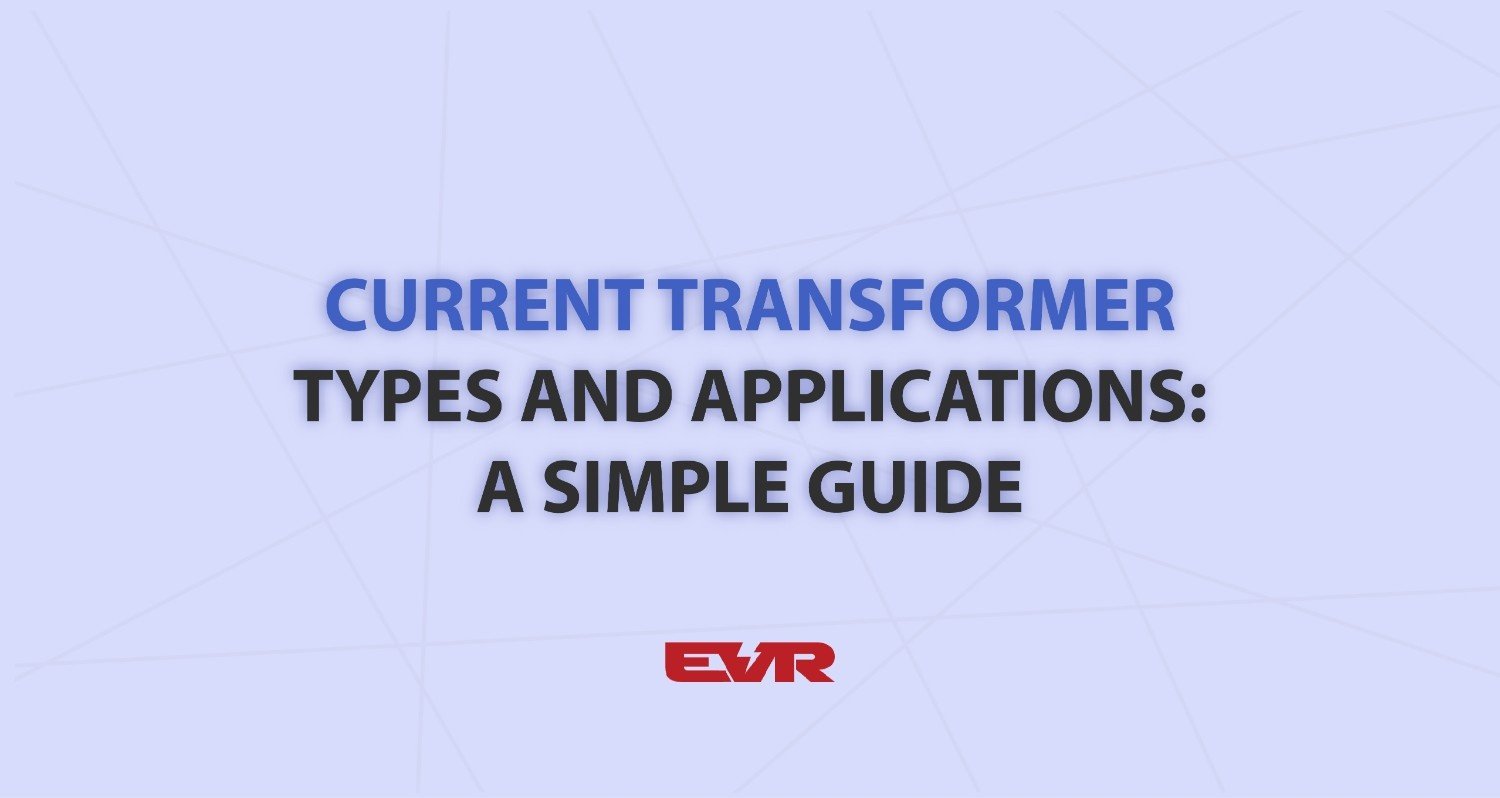A Current Transformer (CT) is a simple device that helps measure how much electric current is flowing in a wire. It works by converting large currents into smaller, safer ones that can be easily checked with meters or other instruments. CTs are very important in power systems because they allow us to safely monitor and control electricity, protect equipment from damage, and make sure everything works smoothly.
EVR Power is a reliable manufacturer known for making CTs and other modern transformers that help keep electrical systems safe and running well.
Overview of Current Transformer?
A Current Transformer (CT) serves as a type of instrument transformer for monitoring alternating current within a power system. Alternating current in a power line can have an extremely high current as it is being conveyed frequently, so connecting meters or relays to measure that amperage is typically dangerous, if not impossible. Instead, a CT reduces the current down to a predetermined level, usually 1A or 5A, that is safe for measurement. From the CT, the current output of the CT is sent to a measuring meter to help users track their consumption, or to a protective relay to safeguard the system.
CTs are a common component in substations and industrial plants while working in combination with Power Transformers and Distribution Transformers to monitor load currents. Hence CT’s exist in the power network for both accurate measurements as well as reliable protection.
Types of Current Transformers
Current Transformers come in different designs, each serving a specific purpose in electrical systems. Familiarity with their types simplifies the process of choosing the most suitable option for any use.
- Wound CTs: Featuring a primary winding connected in series with the circuit, wound CTs deliver excellent accuracy and are commonly employed in laboratory and testing setups requiring precise measurement.
- Toroidal (Ring/Window) CTs: These do not contain a primary winding. Instead, the current-carrying conductor passes through a central opening, which makes them compact and easy to use.
- Bar-Type CTs: In this type, a solid bar acts as the primary conductor. They are robust and widely used in power distribution because they can handle higher currents.
- Split-Core CTs: Designed with a core that can be opened and closed, these CTs are convenient for installation on existing power lines without disconnecting them. This makes them popular for retrofitting and energy audits.
- Bushing CTs: These are integrated into the bushings of high-voltage equipment like transformers and circuit breakers.
- Protection CTs vs. Metering CTs: While both look similar, their functions differ. Metering CTs deliver precise readings at typical load levels, supporting accurate energy usage measurement by utilities. Protection CTs, on the other hand, are made to respond during fault conditions, ensuring relays and breakers act quickly to protect the system.
Each type of CT plays a role in making power systems safer, more reliable, and easier to manage.
Current Transformer Applications
Because they make measuring and monitoring high currents safe and dependable, current transformers, or CTs, are utilized in many power system components.
Metering: In order to accurately measure electricity consumption for billing purposes, utilities employ CTs. They enable regular meters to function safely by bringing high currents down to acceptable levels.
Protection: CTs are essential for safeguarding equipment. Protective relays receive signals from the CT during faults or overloads, and they trigger circuit breakers to stop damage.
Monitoring & Control: CTs assist operators in tracking load conditions and enhancing system control in substations, factories, and grids.
Integration with Other Transformers: CTs are often used in combination with other transformer types to enhance overall system performance:
- In inverter-based systems such as solar and wind power, CTs are paired with Inverter Transformers to monitor and regulate power conversion.
- In environments where electrical harmonics can cause instability, CTs may work alongside Harmonic Mitigating Transformers to keep power clean and reliable.
- For sensitive equipment that requires safety and noise isolation, CTs complement Ultra-Isolation Transformers.
Advantages of Current Transformer Use
In any electrical configuration, current transformers (CTs) provide definite benefits.
- Safety: By lowering high currents to safer levels, they safeguard equipment and operators.
- Accuracy: CTs offer trustworthy readings for analysis, monitoring, and billing.
- Cost Savings: They enable the use of smaller, less costly meters in place of large, high-current devices by stepping down current.
- System Reliability: Protective relays, which CTs support, enable systems to react swiftly to errors and avert significant damage.
Choosing the Right CT for Your Application
Selecting the right current transformer depends on several factors, including rating, burden, accuracy class, and installation type. The rating must match the system’s current levels to ensure precise measurement, while burden defines the load that the CT can handle without performance issues. Accuracy class determines how reliably the CT replicates actual current values, which is critical for protection and metering. Installation type whether indoor, outdoor, or panel-mounted also plays a key role in ensuring safety and durability.
At EVR Power, we specialize in designing CTs tailored for utilities, industries, and OEMs, ensuring solutions that balance precision, reliability, and ease of integration. Our expertise extends across transformer solutions that support complete electrical safety and efficiency.
To discuss your requirements or browse our transformer categories, visit EVR Power.
FAQs
1. For what purpose is a Current Transformer (CT) used in electrical systems?
The function of a CT is to convert large currents into smaller, safer values for monitoring and protection purposes.
2. Where are Current Transformers commonly used?
They are widely used in substations, industries, and utility metering systems.
3. How do metering CTs differ from protection CTs?
Metering CTs focus on accuracy during normal loads, while protection CTs act during faults.
4. Can CTs be installed on existing power lines?
Split-core CTs are made for easy installation without needing to disconnect the lines.
5. Why choose EVR Power for Current Transformers?
EVR Power provides reliable, accurate CTs and other transformer solutions for safe power systems.


0 Comments